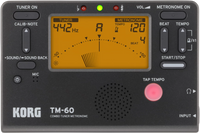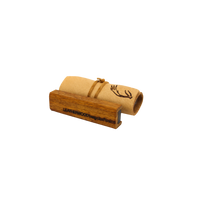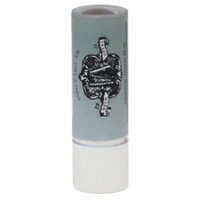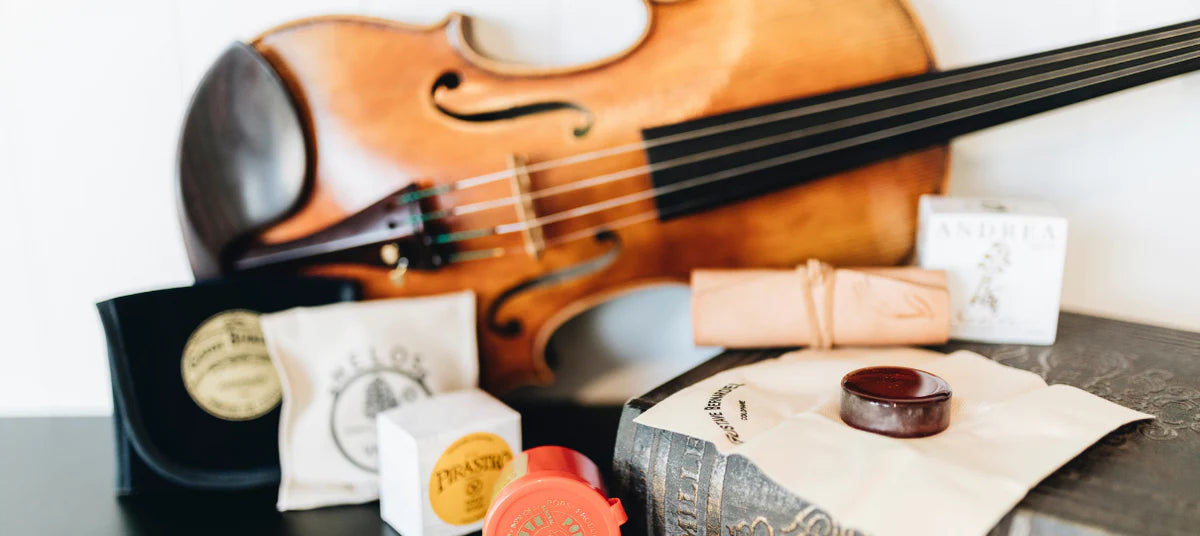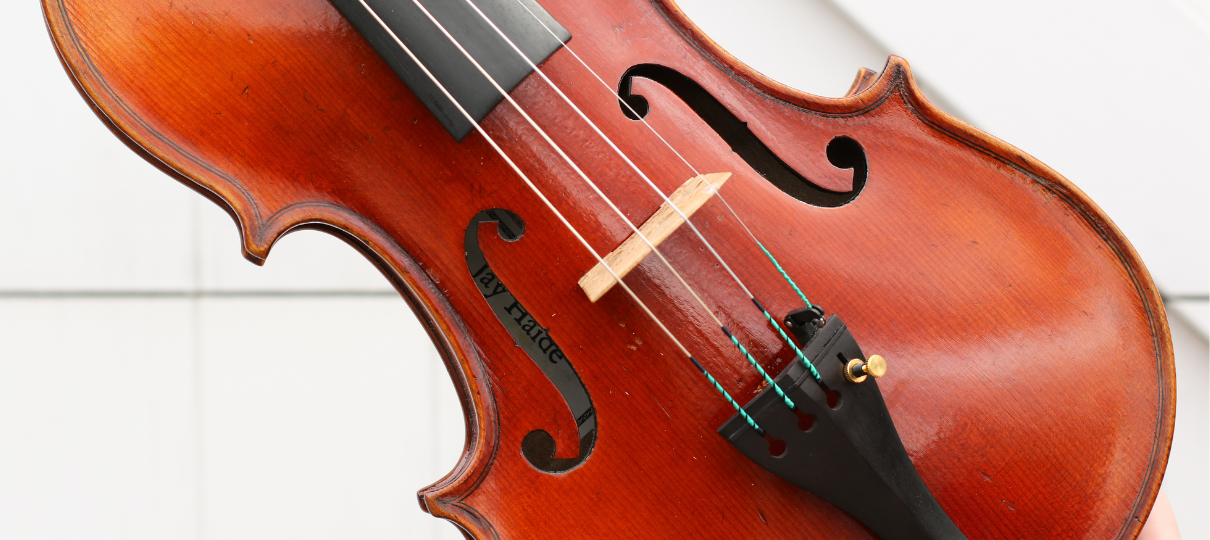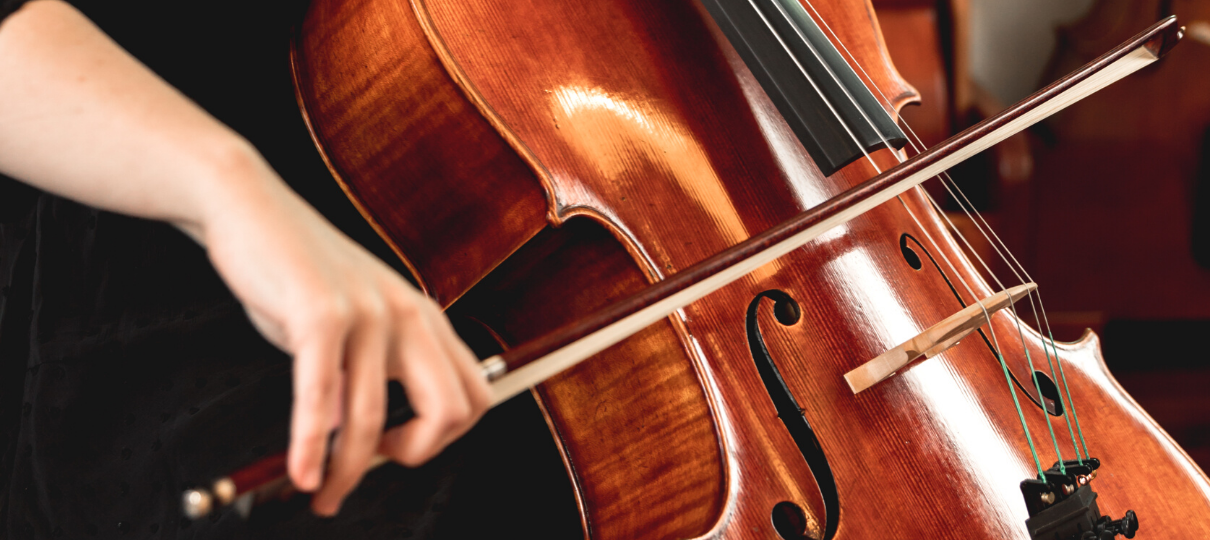Your string has snapped right before a concert, or whilst it’s being fitted to your instrument! We know how frustrating it can be - but why does it happen? In this post, we are going to explore why strings break, and what you can do to avoid it!
We often receive emails from string players asking for a refund or replacement of strings because they broke while fitting, or in the first few days of their usage. Often these are even highly experienced professionals and teachers of many years, so we avoid making assumptions. We usually ask for photos of the strings, the pegbox, nut, bridge and tailpiece. Why do we do this?
There are many reasons for a string to break. You might not expect it, but the least likely answer is actually a manufacturing fault. String manufacturers take great care to quality check every process throughout string making, and we very rarely see faulty strings making their way through the stringent quality checks. Indeed there are so many variables that could cause a string to break, therefore the manufacturers do not offer a formal warranty on strings. Let’s take a look at some of the frequent causes of string breakages that we encounter. There are surely other reasons we haven’t included here, but this gives you some great pointers for good string care.
Overtightening
The single biggest cause of breakage that our team sees is from overtightening. We are often presented with the instrument to fit a new string and we find the other strings are pitched too high. Sometimes this is just a lapse of concentration, plucking one string and turning the wrong peg! When a string breaks up in the pegbox, the most likely answer is that it was over-tuned. There are other causes, but that is the most common.
Age/deterioration through use
This is probably one of the most common reasons that strings break. As with any other product we may use throughout our lives, strings wear out through continued use. Sometimes a string breaks simply because it has reached the end of its life, and you probably should have replaced it quite a while ago. As a rule of thumb, violin and viola strings, with sustained, regular use, will require replacement every 6-8 months, and cello strings every 8-12 months. It may sound like a marketing ploy on behalf of string manufacturers, but due to the precious metals used to make strings, they simply will deteriorate with use. Make it fun and try a new string set with your next purchase!
String Injury
Bumps against a music stand are quite common for cellists and bassists, as well as violin/viola, as we stand up from playing. Please take care! Sometimes that extra bit of pressure can be all it takes to break a string.
Sometimes you see small nicks in the metal winding as indication of those bumps. These nicks weaken the strong outer layer and often develop by “fraying” and the string either snaps or unwinds. Badly-cut or long fingernails can do very similar damage to banging the string, while you are playing. We don’t see this affecting cellists as much because their strings are larger and stronger, but it’s a danger for violin/viola.
Corrosion caused by dirty/oily/acidic skin
Strings can be greatly affected by the condition of our skin. Wash and dry your hands thoroughly before you play, every time! Dirt, sweat, oils and other impurities can damage the metal outer winding, but not only that: even the inside of the string can be damaged. The strings are wound, so dirt, oil and moisture can seep inside through the edges of the winding.
People with a low pH (acidic skin) can find their strings deteriorate more rapidly. Here’s a link to a great article about how impurities in our skin, and even using cleaning products on our strings, can damage them, from string manufacturer Warchal. There are some strings on the market that are more suited to those with more acidic skin, so get in touch with our friendly team if you would like to learn more.
The best way to clean your strings is a firm, not abrasive and not fluffy, microfibre cloth. Wipe the strings thoroughly clean with it after every time you play, and you will help keep them in their best possible condition for the longest possible time.
Tuning up to pitch too quickly when new
Remember, when you take that string out of its packet it has never before been attached to an instrument. The person making it will have tested its strength on a special machine but you are fitting it for the first time, bringing it over the bridge, bending it around the pegs, dragging it through the grooves and bringing it up to pitch. The string will have resistance as you stretch it out. Tune it carefully, bringing it up to the correct pitch a little at a time. It is at its most vulnerable right now, and tuning it up without consideration of the need to stretch can cause it to resist and snap!
Stuck to the bridge or nut
The strings, when tuned and ready to play, apply several kilograms of tension, to the instrument. Add to the fact that they are wound, not simply straight smooth wire, there is the possibility for them to stick slightly to their points of contact: the nut, bridge and the ball can jam onto the fine adjuster claws.
At these two main points of contact (bridge and nut), if they are stuck under pressure, when you go to raise the pitch by turning the tuning pegs, there is a danger of causing the coils to separate. We see plenty of string breakages either directly at the nut or higher up in the pegbox. You can do two things to reduce this risk:
1. Make sure when you remove the strings or have them loose, to line the grooves on bridge and nut with a graphite pencil. This helps with lubrication and protects both the wood from the string, and the string from the wood.
2. Whenever you are tuning with the pegs, loosen the string slightly; gently pull on it (or pluck for tuning) and that should help unstick the string. Then it will be safer to tighten and less likely to break.
This may sound involved and time consuming. In reality, it’s a very quick step in tuning that doesn’t add time to the process once you have worked it out.

Incorrect installation
There are few things to bear in mind when fitting strings. Avoid clutter in the pegbox. Strings dragging unnecessarily over each other because of incorrect positioning on the pegs, can cause breakage.
If the strings are touching side of pegbox, aka sitting too closely to the sides all of the time, that can cause them to drag against the wooden side of the pegbox when tuned. This can damage the outer layers of metal and cause fraying and snapping.
When the string is kinked on an acute angle from the nut groove sideways to a peg, instead of going straight upward, this can add strain to the string and potentially damage the winding. Even if damage isn’t caused, we have discovered that this will affect the harmonic balance of the strings and double-stopping can become much harder to keep in tune.
Instrument Issues: Nut & Bridge
The two most common reasons for string breakage concerning the instrument itself is either an issue with the nut, the bridge or a combination of both.
Incorrectly cut grooves in nut
Grooves that are not quite on the correct angle; too deep and narrow; not smoothed out well enough; not smoothed at the entry and exit points; and not lined with graphite (a pencil): All these factors can create areas of damage to your expensive strings and possibly cause breakage.
Faulty bridge (carved incorrectly or twisting out of shape)
As above, the grooves on the bridge can also be a cause of damage if they haven’t been cut and finished properly. A bridge that is not sitting in its correct position may cause damage to the strings because of the angle of the grooves. A bridge that is twisting out of shape is likely to also cause damage to strings, for the same reasons as above.
Tailpiece
If the string ball is not fitted correctly into the fine tuning claw, this can damage the loop. Make sure the ball end is correctly seated in the claw when fitting new strings. We often see instruments where one of the strings is stuck in the side of the tuning lever, instead of in the claw that is designed to hold it. This can damage the loop, which is the thinnest part of the string and therefore perhaps the weakest. Some fine tuner claws can have sharp edges which have been known to break strings. Take care!
Manufacturing Faults
Here at Simply for Strings, we rarely see strings with manufacturing faults, but that’s not to say that they never happen. We recommend checking new strings for any noticeable fraying, bumps or unwinding before fitting them to your instrument. If you do spot something unusual, make sure you return to the place of purchase to see what can be done to help you get playing again!










